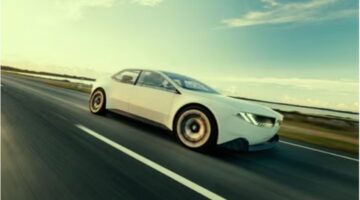In order to truly synthesize McLaren’s latest high-tech, high-downforce hypercar, we decided to send someone who’d be able to both understand the engineering and get the best out of the car. IndyCar driver JR Hildebrand was the man for the job. – Ed.
The modern breed of super-high-performance road cars can be so excessive that it’s difficult to really understand where they belong. Are they road cars with extreme track-inspired capability, or track cars designed for the road? Or are they made for the Texas Mile? Or for pulling up to the Aria in Vegas after hauling ass from LA with your mistress? Or for being the king of Cars and Coffee with a killer Insta feed?
There’s really no right or wrong answer here–as can be seen by the growing market for any and all of the above–but for those of us who really care about the drive itself there’s serious risk in the answer being ambiguous. In many instances, they are neither road cars nor track cars and don’t feel particularly at home in either environment.
The McLaren Senna requires no such interpretation. To call it a road car would be wrong, to call it a track car would even be a disservice; it is unapologetically a full-blooded racecar that professional drivers and teams would lust after, and it just happens to be street-legal enough to get you to and from the track.
Prior to getting behind the wheel I found myself putting the Senna’s performance measurables through my mental computer in comparison to other road cars, but frankly wasn’t sure what to make of it. 1,200kg dry weight, 800PS of power, 800Nm of torque, 800kg of downforce at 250kph. Ok, first the units are all wrong – 2,640lbs, 789bhp, 590lbft of torque, and 1,760lbs of downforce at 155mph
For reference, the dry minimum weight of 2018 IMSA GTLM cars is 2,750, 100lbs more than the Senna weighs. They are limited to the neighborhood of 525hp, 200 horsepower less. Downforce? I was quoted almost the exact same number as the Senna’s for their maximum possible trim level at any track.
Normally when you trail brake into a high-speed corner in a high-downforce car you know that you risk pinning the car’s nose and getting increasingly unstable the deeper you try to go. As you brake, not only does the weight of the car transfer forward, but the aero-balance does as well due to the car’s change in pitch. High-downforce cars can be extremely sensitive to this effect, normally requiring quite a lot of attention be paid to how the car is transitioning through these cornering phases by the driver.
In the Senna, McLaren is showing that it sees the way forward and has gotten the jump off the line. For that, and the incredible experience the car delivers, I’m sure the man himself would be very proud.









